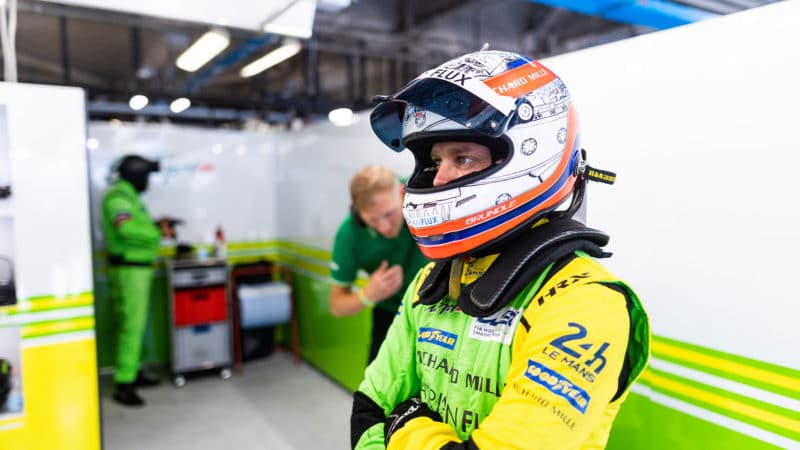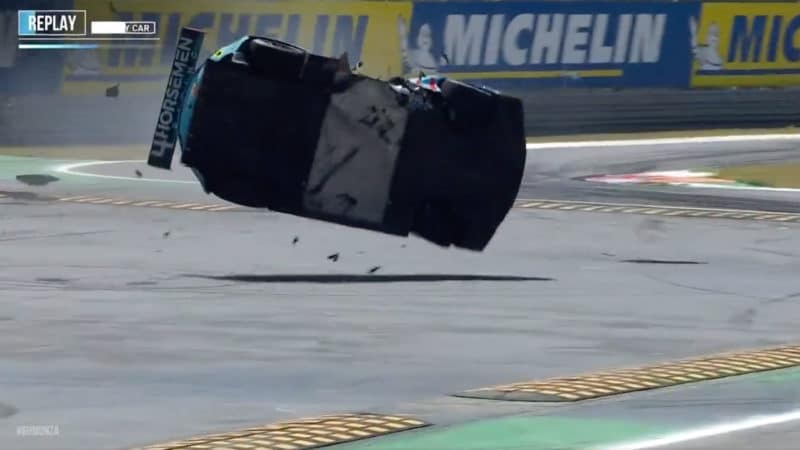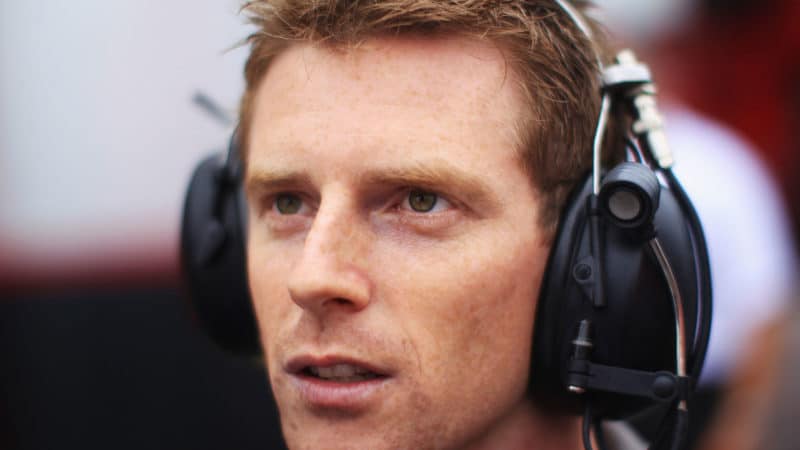Davidson highlighted the violence of the Monza crash, and the threat that the kerbs pose to drivers.
“The actual impact of the sausage kerb was enough to break the door off and obliterate the right-hand side of the car,” he says.
“When you think of the impact it takes to do that to a racing car, you only have to imagine what the force would have been like on the driver. You can see an instant fracture of the spine in that kind of moment.
“I think Chavez was very lucky to walk away from that one and that many people dodged a bullet that day, I really do.”
Davidson believes that the kerbs also contribute to more aggressive racing because most drivers are able to run over them and continue.
“At Monza we see so many cars now barrel in there side-by-side,” he says. “The driver on the outside is more than happy to give it a go to try and hang on round the outside, and the driver on the inside is more than happy just to squeeze the other driver out of road.
“There’s no respect – I hate that kind of racing, it ruins it.”

Brundle says the accident made for uncomfortable viewing from the garage
Joao Filipe / DPPI
He believes that gravel traps are a much better alternative because drivers are naturally more cautious of running off and becoming stuck. In the event of the crash, they also dissipate more energy, says Davidson, although they can still cause cars to roll and aren’t always suitable for MotoGP.
Brundle is also an advocate for more gravel: “I think they do the best of a bad job realistically, slowing the cars if they go off circuit, and preventing cars that have had a failure from just careering into the barriers.
“Grass and gravel generate a physical deterrent, and then it’s down to the drivers to keep the cars in between the white lines – I don’t see what’s wrong with that.”



